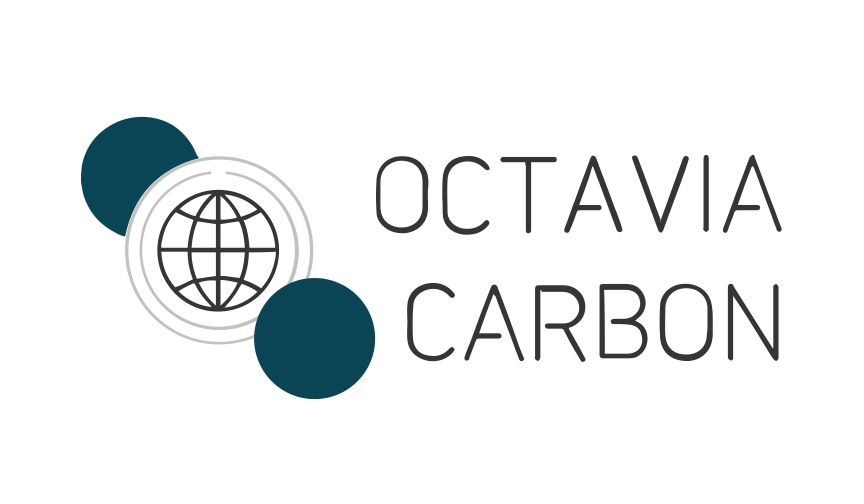Octavia Carbon, a brand new project based out of Kenya, aims to sequester carbon in a unique way using a familiar approach: direct air capture. Located in Kenya's Great Rift Valley, their first installment, Project Hummingbird, will leverage the region’s geothermal waste heat and local geology to capture and store CO₂ while creating green jobs and potentially reducing energy costs for local communities in Kenya.
As part of our five criteria for high quality carbon credits, this qualitative self-evaluation examines the measurability and durability of their approach, co-benefits, respect for the environment, and alignment with the needs of local communities.
-
Measurably sequester CO₂: Together with our storage partner, we will continuously measure the CO₂ captured, liquefied, and injected using sensors and flowmeters. A database will allow us to track the maintenance and calibration schedules of our sensors and flowmeters to ensure their accuracy and reliability, ensuring the integrity of the data collected is maintained. The data collected will be shared with a third-party verifier accredited by Puro.earth for comparison against nominal/design data to ensure accuracy.
We are also in discussions with external digital MRV (DMRV) providers to implement IoT-based MRV. This will enhance the credibility and transparency of the CO₂ sequestered.
-
Higher price based on durability and co-benefits: Our captured CO₂ will be injected into basaltic rock layers abundant in the Kenyan Rift Valley. Basaltic rock layers act as natural CO₂ reservoirs because they facilitate the rapid chemical reactions necessary for mineralization, a permanent form of carbon storage. The reactions transform CO₂ into solid carbonate minerals, effectively locking it away for millions of years with minimal risk of leakage. Once fully mineralized, the CO₂ can only decarbonize if subjected to temperatures of >700⁰C, in the absence of which the CO₂ remains permanently stored.
Beyond carbon removal, a key benefit of the project is that it can potentially lower electricity costs for rural and urban communities in Kenya. Kenya has a 93% renewable energy grid with plans to reach 100% by 2030. However, the growth of the renewable energy sector is hindered by a lack of adequate demand for the electricity being produced. This leads to higher electricity costs for consumers, who have to pay for the excess capacity being produced. Project Hummingbird and our successor projects will create a new industrial demand for electricity, utilizing the extra capacity and incentivizing more investment in the grid. This will also increase energy access for more Kenyans.
Additionally, the project will create green jobs for local pastoralist communities whose livelihoods have been affected by climate change. Revenue generated from the project will forge a path to offering climate justice to local communities in Kenya that have been disproportionately affected by the effects of climate change. A portion of the revenue will finance local community initiatives, especially those focused on local ecosystem regeneration and access to climate-relevant skills development. This will allow us to nurture young leaders capable of solving climate issues in Kenya and beyond.
-
Are additional (wouldn’t have happened without human intervention): Project Hummingbird is inherently additional because existing laws and regulations do not mandate it. This makes it a voluntary and proactive initiative contributing to global efforts to address climate change and attain net-zero targets. Additionally, the revenue generated from the project will be used to directly fund the production of the Direct Air Capture (DAC) machines that will be deployed to capture atmospheric CO₂.
-
Respect land, water, and biodiversity: Project Hummingbird will not displace local communities or affect the surrounding ecosystem. The project will be deployed on privately owned land in a sparsely populated neighborhood set aside by the owner for development as an industrial business park. The land is owned by a private geothermal concession holder who intends to develop the park to utilize the geothermal power generated from this plant.
Additionally, we will not use fresh water in the plant operations for either DAC operations or sequestration. Geothermal steam will be recycled for the DAC process, and our storage partner will use recycled geothermal steam, geothermal brine, saline groundwater, or a combination of these for sequestration.
While we do not anticipate any ecosystem leakage within our deployment area, we will conduct a thorough environmental impact assessment (EIA) before operations begin. This will help us to identify and address any potential risks promptly.
- Align with the needs of local communities: We actively engage with local communities in our deployment area to ensure our project meets their needs. We have a community engagement consultant who is an intermediary between us and the communities. Our ongoing engagements show that the communities are very interested in being involved in the project and learning more about our operations. To this end, we are organizing educational programs to spread knowledge about our proposed DAC operation in their area. This will allow the communities to advocate for their rights in the decision-making processes and feel a sense of ownership and involvement in the deployment and operation of our pilot plant.
Overall, Octavia Carbon's efforts appear to be promising. Their strategy of utilizing geothermal waste heat appears as a sound solution to the global challenge of carbon dioxide removal. Moreover, Octavia Carbon's commitment to respecting the local ecology and communities they engage with exemplifies their dedication to minimizing harm and bringing the most benefit to those whose livelihoods have been most affected by climate change. In their holistic endeavor, Octavia Carbon not only captures carbon but also creates a more prosperous and sustainable future for those in the surrounding area.

